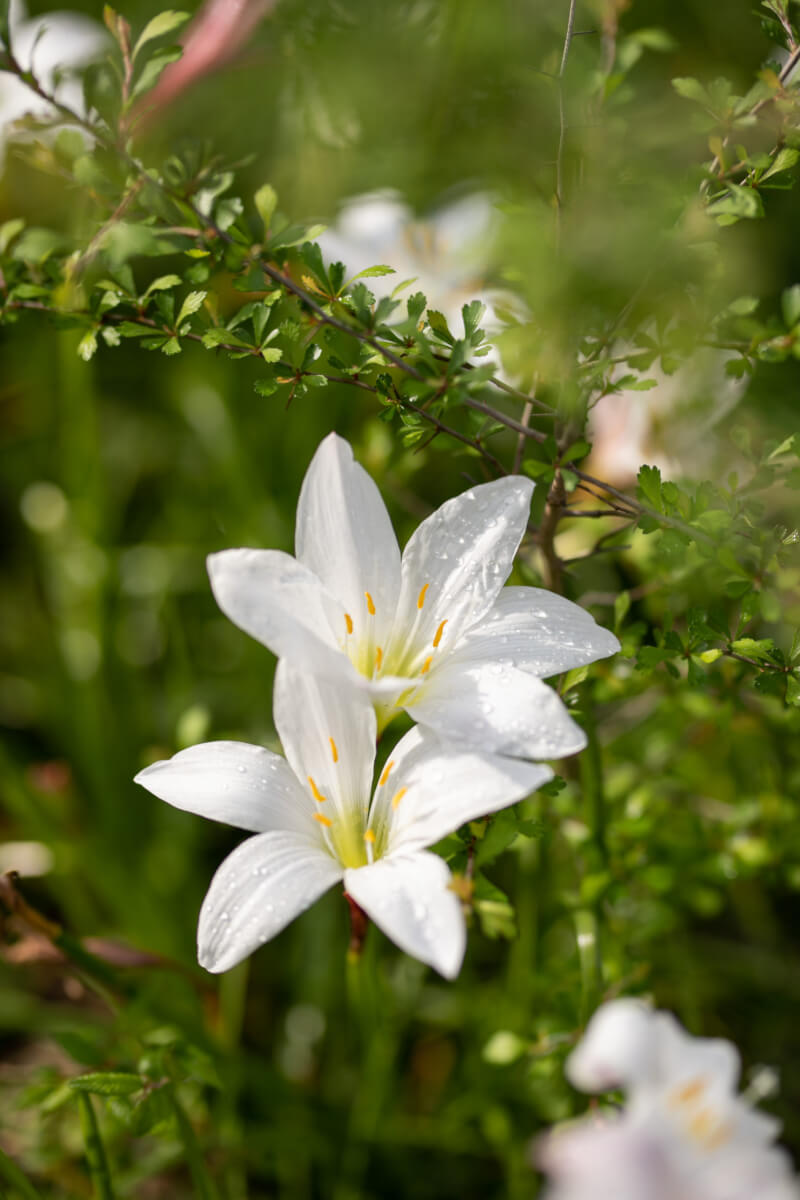
Preserving our past, protecting our present, planning for our future: ONPPI seeks to conserve Ocmulgee River basin for natural beauty and biodiversity
By Lisa Mayfield Spence
Photography by Christopher Smith
The second in a series of articles exploring the past, present and future of the Ocmulgee National Historical Park and Ocmulgee River corridor. Read the first article at maconmagazine.com.
Read the first article here and the third article here
As Ocmulgee Mounds National Historical Park prepares to embrace its change in designation from historical park to National Park and Preserve, it begs the question: What does it mean to be a “preserve,” and what does this designation mean for the natural biodiversity of the Ocmulgee River basin?
The Southeastern United States, as a whole, is a global hotspot for biodiversity. The term refers to the biological diversity of natural life in a region, such as the plants, animals, fungi and micro-organisms, as well as to the communities they form and the habitats in which they live and thrive.
Likewise, a “national park and preserve,” as Ocmulgee will soon be titled, refers to the protection of certain resources and the allowance of permitted activities such as hunting, fishing and the extraction of minerals and fuels, provided they do not jeopardize the natural values of the land.
Heather Bowman Cutway, professor of biology at Mercer University and board member of the Ocmulgee National Park and Preserve Initiative (ONPPI) for more than 10 years, has a unique perspective on the designation and its impact on natural biodiversity.
“If you want to protect lots of plants and animals, conserving land in the South is the best bang for your buck,” she said. “The Ocmulgee watershed is no different.”
The river’s wetlands, grasslands and forests provide significant habitat for migratory birds, wildlife corridors for mammalian species and spawning habitat for fish, including some endemic species found nowhere else on earth, she explained.
The effects of industrialization on down-river biodiversity must be considered, because they play a critical role in the biological makeup of the region.
“The headwaters of the Ocmulgee River are located around Atlanta and are therefore heavily impacted by industrialization,” Cutway said. “However, as the Ocmulgee River passes south of Macon, much of the surrounding land is protected by a series of federal- and state-owned lands.”
These areas include the Ocmulgee Mounds National Historical Park, Bond Swamp National Wildlife Area, Oaky Woods State Wildlife Management Area (WMA), Ocmulgee State WMA and Echeconnee Creek WMA.
“In spite of the developments farther upstream, the Ocmulgee Watershed is rich with biodiversity,” Cutway said. “Iconic species like the bald eagle and black bear provide evidence of the wildness of the land. Rare species like the Swainson’s warbler, robust redhorse sucker and Rafinesque’s big-eared bat are part of the unique bottomland forest communities that reside here. Blackland prairies, a globally-imperiled rare plant community, can be found within Oaky Woods.
“A National Park and Preserve would stitch together these areas into one contiguous wilderness area. Not only would the habitat be protected, but it would also allow us to maintain the diversity of use. Hikers, paddlers, hunters, fishers, birdwatchers, etc., will all continue to enjoy the area and all it has to offer.”
Although much of the area surrounding the river is forested now, that doesn’t mean it isn’t threatened.
“Urban development, timber operations and agriculture continue to squeeze in on the banks of the Ocmulgee,” Cutway said. “All you have to do is look at the land use around the river south of Hawkinsville to see the potential change. Development brings loss of biodiversity and an increase in water and air pollution.”
Kathleen O’Neal, owner of Ocmulgee Outdoor Expeditions, a kayak- and canoe-touring company along the Ocmulgee River, sees her role as a private citizen who understands how important saving the wilderness is to our survival on this planet and how important it is to our individual well-being. As such, she is very interested and supportive of protecting the Ocmulgee and the river corridor surrounding it.
“From my perspective, paddling the Ocmulgee River offers us the chance to enjoy nature and reflect upon the clouds in the sky and the herons along the shore and the slider turtles sunning on the logs, and realize that floating on this river in a kayak or canoe is a balm to the soul,” she said.
The importance of wilderness and the biodiversity found in the Ocmulgee River basin also is crucial to our well-being and the well-being of the planet.
“When an area is diverse biologically, it brings a richness to the lives of those who visit and study it, and it also protects our health by filtering the water we drink and the air we breathe,” O’Neal said. “Studies have shown that spending time outdoors in nature benefits human mental health.”
At the same time, O’Neal recognizes the importance of the Ocmulgee’s new designation from a preservation standpoint.
“We live in an industrialized world and though industrialization is often thought of negatively, there are many benefits,” she said. “The benefit of having a protected corridor along the Ocmulgee River as proposed will be extremely beneficial to the existing animals and plant species that call this area home and, in turn, will benefit the human visitors to the park.”
Dr. John Bembry, a Hawkinsville veterinarian, self-titled tree farmer, forestry advocate and lover of the outdoors, is proud to say his family has been native to Pulaski County “since forever” — or at least since revolution-era land grants permitted his ancestors to begin farming these lands. Together with his sister, Bembry owns the original farm built by his great-, great-, great-grandparents, which sits on the Ocmulgee River.
“I grew up in, on and around that river,” he said. “We’re all connected in some way by that river; that body of water is the great connector.”
As a board member of ONPPI, member of the Middle Ocmulgee Regional Water Planning Council, member of the Georgia Conservancy and former member of the board of trustees for the Georgia Conservancy, Bembry has a unique perspective on the role of the river and its natural biodiversity.
“We are blessed to have a free-flowing river and river basin from Juliette all the way down to Darien,” he said. “I have swum, paddled and motored down some or all of it, not to mention hunted the bottomlands and fished the river and its tributaries. While I am not a trained naturalist or ecologist, I appreciate the natural beauty and wonder of all the flora and fauna in our basin.”
This waterway has been appreciated for thousands of years for the abundance of game and fish — deer, ducks, turkeys, bears and more — not to mention the non-game animals that serve to keep the habitat both in and out of the water in balance, suggested Bremby.
The true biodiversity of the region is most evident as the topography of the land transitions from the steeper, rocky shoals of the Piedmont region just north of Macon to the flatter, sandier upper coastal plain down in Pulaski County, he said. The topographical and geological transition is found both in the flattening of the land as well as in the soils of the lower flood plains.
“One can appreciate the dramatic difference in the flow and course of the river, not to mention the breadth of its flood plain and the type of habitat found in the adjoining upland buffer lands,” Bembry said. “Much of the diversity comes from the transitions in topography and vegetative cover in the corridor that we are hoping to protect with the designation as a National Park and Preserve.”
Though the Muscogee Creek Nation no longer fully reside in the corridor, the rich biodiversity of the river undoubtedly played an important role in the choice of this location in which to build their community, speculated Cutway.
“Macon is located on the Fall Line — that point where the Piedmont and coastal plain regions meet,” she said. “As a result, you get the biodiversity of both regions in one location.”
In addition to the overall diversity of the area, particular plants and animals played essential roles to the Muscogee people.
“Plants like rivercane were used extensively by the Muscogee for blowguns, thatching for houses, mats, fishing spears, arrows, baskets and ceremonial items,” she said. “The Ocmulgee Mounds National Historical Park has restored large swaths of rivercane along the river.”
Knowing their native lands are recognized for their natural biodiversity and that preservation is critical, is particularly meaningful for the Muscogee Creek Nation.
The natural biodiversity of the river corridor was the basis of the Muscogee Creek Nation’s sustenance for thousands of years, Bembry said, in contrast to us, as settlers, appreciating the river and its resources for only hundreds of years.
“It now serves as a basis for preserving that legacy and drawing our modern society to be more closely attuned to it and its multiple benefits,” Bembry said. “From my perspective, the natural biodiversity of our river basin hinges on the vegetative cover along the river corridor. From the big majestic hardwoods found naturally in the flood plain to the upland buffer of longleaf pine forests, landowners adjoining the Ocmulgee National Park and Preserve would benefit from the diversity, stability, filtration and erosion control aspects of the designation.”
As Bremby pointed out, everything is interconnected; the ecosystem depends on biodiversity.
“The food chain and life at all levels benefit from balanced biodiversity,” he said. “From algae to vegetation and trees, from bugs and fish to beavers, from squirrels and deer to people … we all must thrive together.”
The vision for the Georgia Conservancy says it all: “A Georgia where people and the environment can thrive.” Protection of the natural ecology of the river corridor is beneficial not only for the flora and fauna within it, but equally beneficial both economically and environmentally for all that the ecosystem provides to us.
Next in the series: We’ll talk to both the current and former chiefs of the Muscogee Creek Nation for their perspective on the initiative, aspects of biodiversity impact and more.







